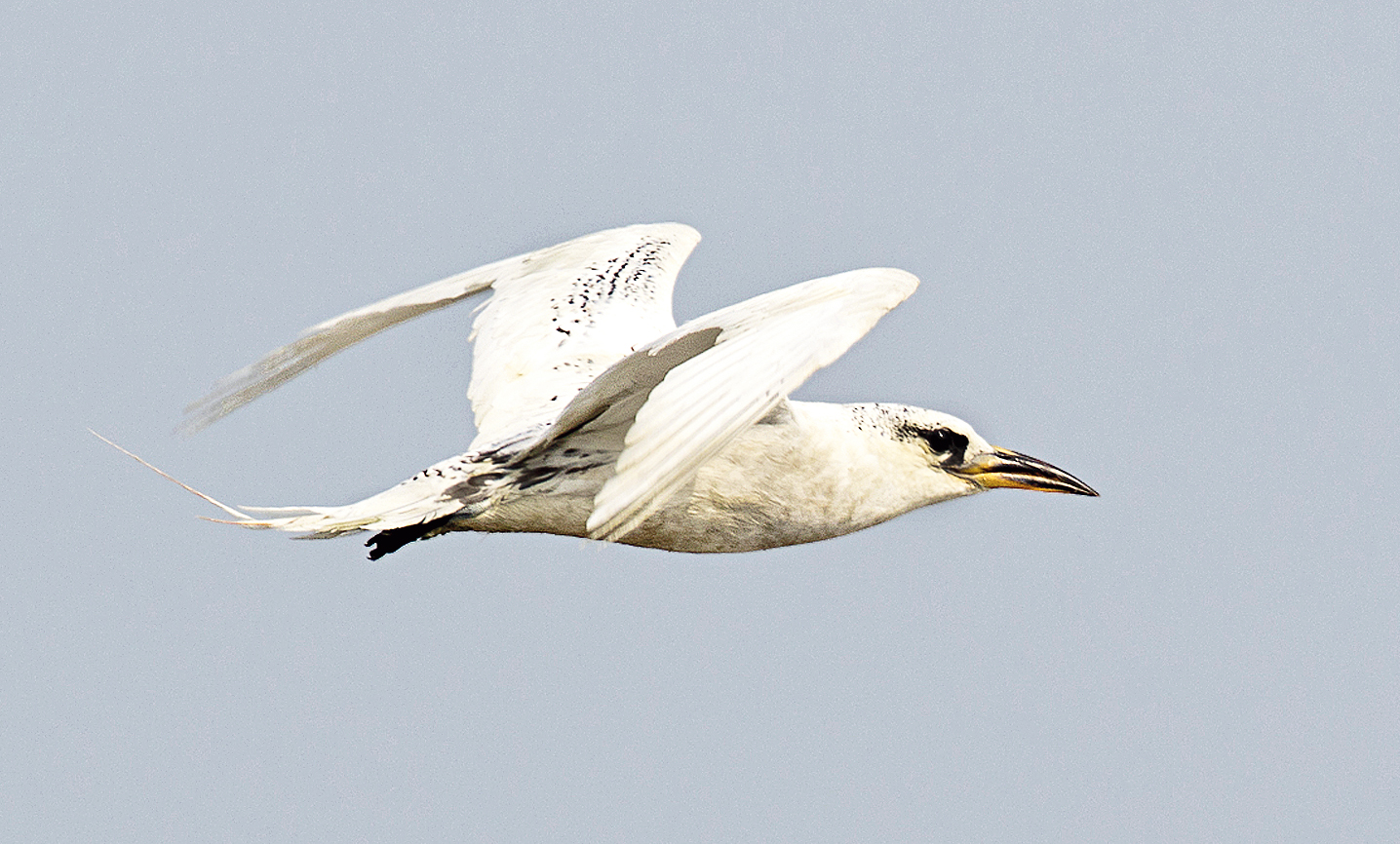A bird that spends almost its entire life in the skies over the Indian Ocean was found in a village near Dankuni in Hooghly district, possibly swept in by Cyclone Fani.
The juvenile red-tailed tropicbird (scientific name Phaethon rubricauda), whose identity was established following online deliberations among birders from multiple countries, was released back into the wild at Jambudwip, a Bay of Bengal island off Bakkhali, on Sunday afternoon.
Santana Acharya, a resident of Jagadishpur Baigachi village, 30km from Calcutta, found the bird on the road in front of her house on May 5 morning, two days after Fani made landfall in Odisha clocking 200kmph.
“The strays I feed were barking that morning. I approached the spot and saw a whitish bird in the middle of the dogs. The bird was squealing,” recounted Acharya.
She wrapped the bird in a towel, brought it home and kept it in a tub. “I could make out from the bird’s long beak that it ate fish. I bought some small fish and tried feeding it but the bird looked exhausted and did not eat anything,” she said.
The next day, Acharya posted a picture of the bird on the Facebook page of an animal lovers’ group. A volunteer with the Human & Environment Alliance League (HEAL) contacted her and brought the bird to a house in Salt Lake.
It took a couple of days for birders to identify the species. “We sent the bird’s pictures to international birding communities before reaching any conclusion,” said birder Sujan Chatterjee.
“It must have somehow reached the skies over the Bay of Bengal before getting caught in the storm (Fani).”
Tropicbirds — there are three types of them: Red-billed, White-tailed and Red-tailed — are deep sea species found over the Indian and Pacific oceans and spend almost no time on land, apart from when they congregate in breeding colonies once a year.
“Most of their time is spent on wings. They can swim but their legs are not well formed to walk. They can only shuffle forward,” said Arka Sarkar, president of HEAL.
“The red-tailed tropicbird is very rare on Indian waters. This was the first confirmed inland sighting of the bird. Before that there were two sightings — both on the sea,” Sarkar said.
HEAL volunteers tried their best to nurture the bird, which was around 50cm long and weighed less than 700g, back to health.
“We started by giving it shrimp paste and ORS. The bird gradually started eating and its health recovered. We then gave it normal shrimps. The bird gorged on them and made noise asking for more,” said Meghna Banerjee of HEAL.
When the specialists became confident that the bird was fit to fly, they took it to Jambudwip on Sunday.
“The bird looked comfortable in the proximity of the sea. It first hovered for a few minutes and then made a few trips to the sea and back. The final flight into the horizon was a sight to behold,” said Banerjee.
“This episode shows how everyone’s participation is important in saving animals,” said Santosha GR, the divisional forest officer of South 24-Parganas who was present during the release.











